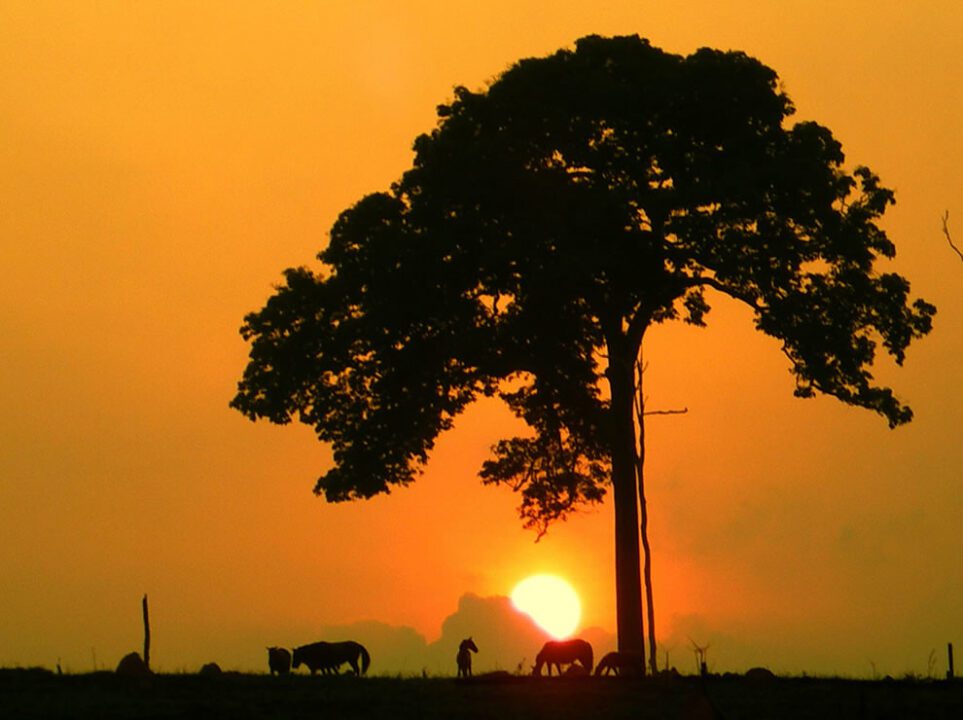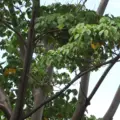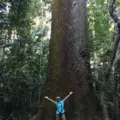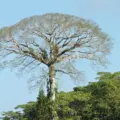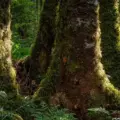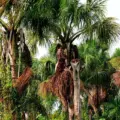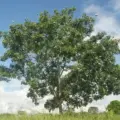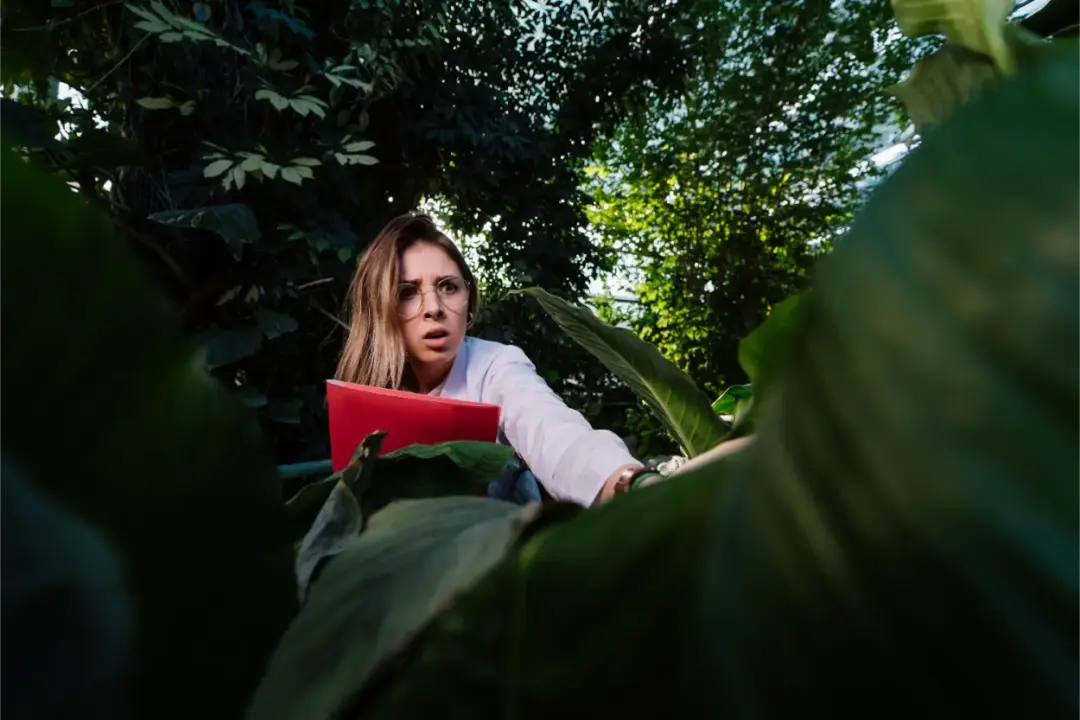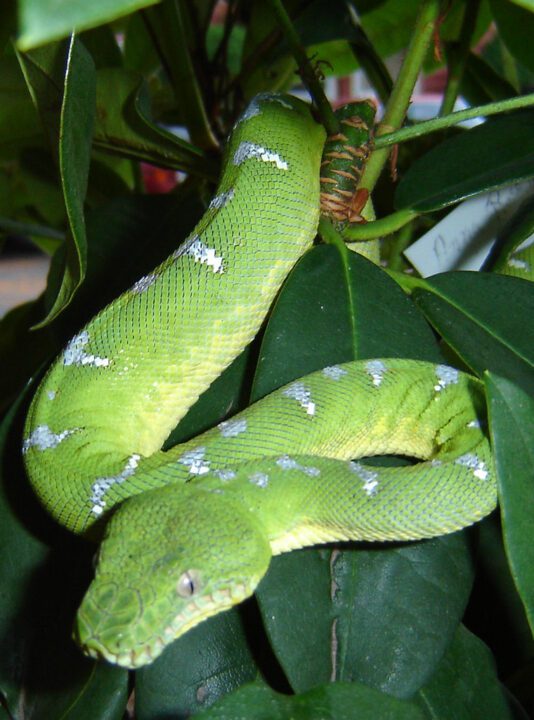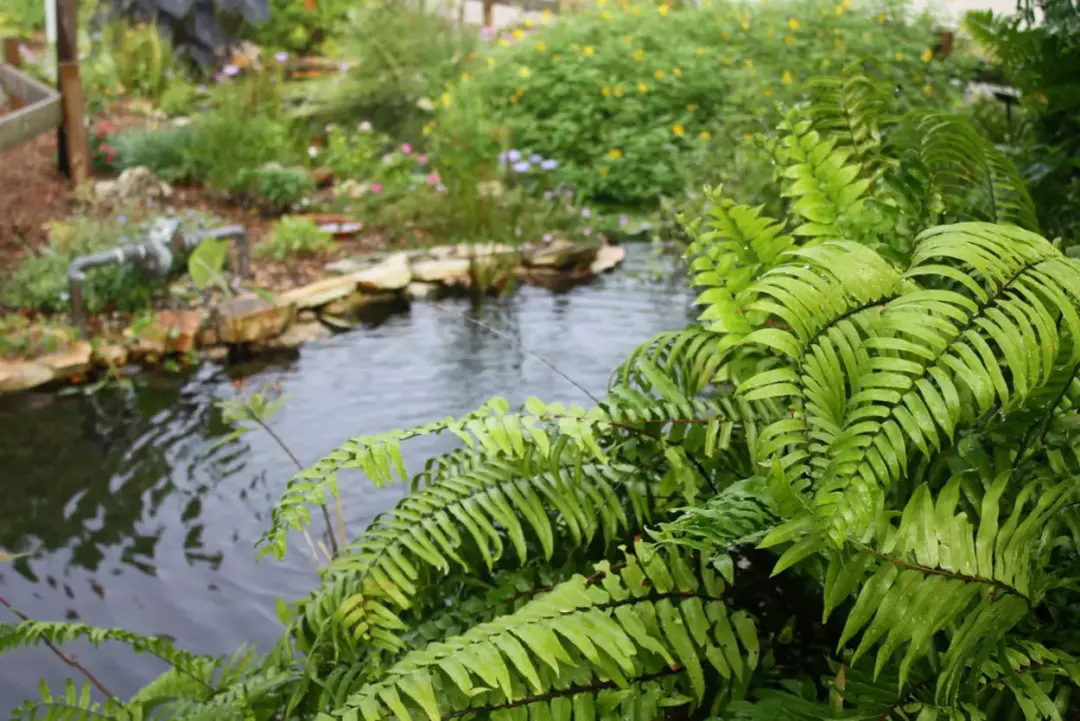The Cecropia Tree is one of the most iconic, fast-growing species in the Amazon Rainforest. Found throughout tropical Central and South America, this tree is not only easy to spot due to its distinctive umbrella-like leaves, but it also plays a crucial role in forest regeneration, wildlife support, and indigenous traditions. Whether you’re a nature lover, eco-tourist, or reforestation enthusiast, the Cecropia Tree is a green marvel worth knowing!
🌳 Overview of the Cecropia Tree
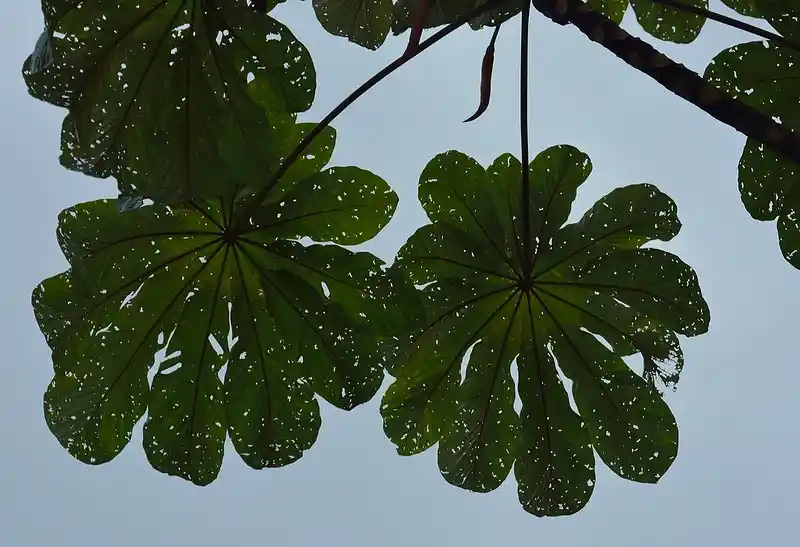
Cecropia spp. refers to a genus of trees that includes over 60 known species, commonly called “trumpet trees” due to the hollow nature of their stems. These trees typically grow between 10 to 25 meters tall and are easily recognized by their palmate leaves — large, lobed structures that resemble open hands or umbrellas. Their pale undersides and radiating structure give Cecropia trees a distinctive visual texture in the dense rainforest canopy.
Unlike many other Amazonian giants, the Cecropia Tree grows rapidly in disturbed or open areas, making it a key pioneer species. When a gap opens in the forest — due to a fallen tree, landslide, or human disturbance — Cecropia is one of the first species to take root. This makes it critical to the process of natural regeneration.
🌱 Ecological Importance of Cecropia Trees
Rainforest Regeneration
Cecropia Trees are considered keystone pioneer species. They colonize cleared or damaged forest areas, stabilizing the soil and providing shade that helps more sensitive plant species to grow. Because of their fast growth rate, Cecropia trees rapidly produce biomass and organic matter, enriching the forest floor with fallen leaves and bark.
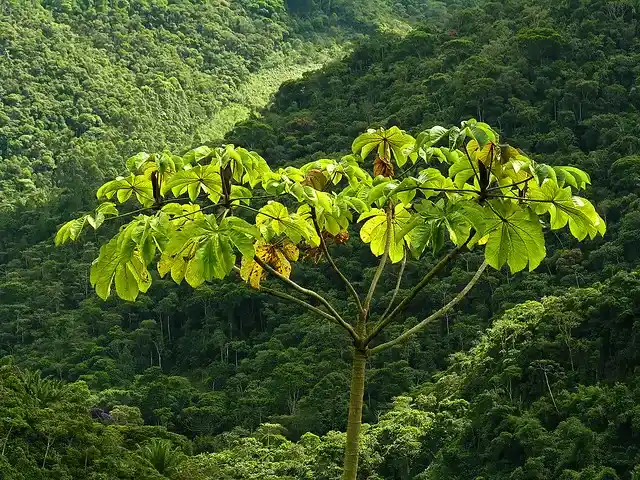
Their presence is a signal of ecological healing. They thrive in high light and low competition environments — the same conditions found in secondary forests. As the forest matures, Cecropia species are gradually replaced by slower-growing hardwoods, but their early role is indispensable.
Natural Fertilizers and Carbon Capture
As a fast-growing tree, the Cecropia absorbs significant amounts of CO₂, acting as a natural carbon sink — an increasingly vital role in today’s climate crisis. Its leaves decompose quickly, enhancing soil fertility and contributing to nutrient cycling. In agroforestry and reforestation projects, Cecropia trees are often planted deliberately for their ability to improve soil conditions and attract beneficial wildlife.
🦜 Wildlife and Cecropia Trees – A Mutual Relationship
Ant Symbiosis 🐜
One of the most fascinating and unique characteristics of Cecropia trees is their mutualistic relationship with ants, particularly the Azteca ant species. The hollow stems of Cecropia provide perfect nesting sites for the ants, while the tree produces tiny food bodies (called Müllerian bodies) specifically to nourish its insect allies.
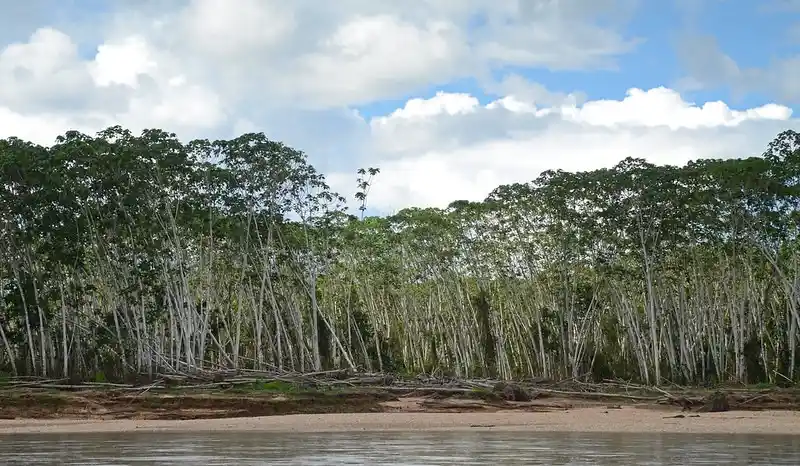
In return, the ants defend the tree fiercely against herbivores and invading plants like vines. This living security system allows the Cecropia to survive and thrive in the competitive rainforest environment. It’s a perfect example of co-evolution and biological teamwork!
Food Source for Animals 🐒🦜
- Fruit bats
- Toucans
- Sloths (especially the three-toed sloth!)
- Monkeys
- Insects and caterpillars
The soft, fleshy fruits of Cecropia trees are rich in sugars and nutrients, making them a favorite snack for dozens of forest animals. This makes the tree a vital part of the Amazonian food web. In some regions, it’s known as the “sloth tree” because these gentle creatures are often seen nestled among its branches, feasting on the leaves.
🌍 Distribution and Habitat
Cecropia trees are native to a wide range of tropical regions, including the Amazon Basin, Central America, and even the Caribbean. They prefer lowland rainforests and thrive in sunny, disturbed areas where their fast-growing nature gives them a competitive advantage.
Species like Cecropia peltata, Cecropia obtusifolia, and Cecropia palmata are some of the most widespread. They are particularly abundant in the floodplains, secondary forests, and riverbanks of the Amazon — areas that experience natural cycles of disturbance and regrowth.
🏞️ Human Uses of the Cecropia Tree
Traditional Medicine 🌿
Many indigenous communities use different parts of the Cecropia Tree for medicinal purposes. The leaves, bark, and sap are traditionally used to treat:
- Respiratory conditions like asthma and bronchitis
- High blood pressure
- Diabetes and inflammation
- Skin infections and wounds
Infusions made from Cecropia leaves are believed to have diuretic, anti-inflammatory, and relaxing properties. Though not widely commercialized, the plant’s traditional uses are still common across the Amazon and Central America.
Handicrafts and Local Tools
Thanks to its soft, hollow stems, Cecropia wood is used in indigenous crafts and lightweight construction. It is often crafted into musical instruments like flutes or used as a building material for temporary shelters. Its fast growth and light structure make it ideal for non-permanent tools that are both eco-friendly and easily replaceable.
🌟 Fun Facts and Unusual Traits of Cecropia Trees
- 🌬️ The hollow trunk can be used as a natural wind instrument when cut and blown like a trumpet!
- 🐜 The Azteca ants will sometimes “attack” human hands touching the tree, mistaking them for herbivores!
- 🌞 Cecropia trees can grow several meters in a single year under ideal sunlight conditions!
- 🍃 The leaves can measure up to 40 cm across, and the underside has a silver-white fuzz that glows in morning light.
- 🌧️ Some species are used as natural rain indicators, with leaves that droop or curl just before a storm.
🔥 Cecropia Trees and Climate Change
In an era of increasing deforestation and biodiversity loss, the Cecropia Tree represents resilience and regeneration. Because of their fast growth and ability to capture carbon quickly, they are being incorporated into reforestation projects throughout the tropics.
Some conservationists promote the use of Cecropia trees in urban greening projects in tropical cities, where their shade and ecological benefits outweigh their relatively weak wood. Moreover, by supporting insect populations and small mammals, Cecropia trees encourage a cascade of biodiversity wherever they are planted.
🌿 Cecropia in Agroforestry and Sustainable Land Use
Reforestation Champion 🌱
Cecropia trees are invaluable to agroforestry systems. Their fast-growing canopy provides early shade for shade-tolerant crops like cacao, coffee, and native fruit trees. They also protect young hardwood trees in mixed planting systems by creating microclimates that reduce water stress and wind exposure.
Farmers appreciate them not just for their utility, but for their beauty and biodiversity benefits. Planting Cecropia can improve pollinator presence, increase soil stability, and even help with natural pest control by supporting predatory ants and insectivorous birds.
Green Buffer Zones and Corridors
Used along riverbanks and as buffer zones between agricultural lands and wild forests, Cecropia trees help maintain connectivity for wildlife. Birds, bats, and arboreal mammals use Cecropia as a stepping-stone species — hopping between patches of intact forest.
In this way, Cecropia trees serve not just as individual pioneers, but as part of larger ecological networks essential to wildlife movement and genetic diversity.
🧬 Botanical Characteristics of Cecropia
Leaves and Photosynthesis
The enormous palmate leaves of Cecropia are perfectly adapted for maximum sunlight capture. This efficient photosynthesis allows the tree to grow quickly and dominate new open spaces. The leaf structure also facilitates rapid water runoff, preventing fungal infections common in humid environments.
The leaf petioles (stalks) often house tiny structures called pearl bodies that serve as food rewards for ants, enhancing the tree’s ant defense system. It’s an example of how every part of the plant serves multiple ecological purposes.
Flowers and Fruits
Cecropia trees are dioecious — meaning individual trees are either male or female. The flowers are long, spike-like structures called catkins, which are often pollinated by wind or small insects. The fruits are small, sweet, and produced in clusters, often consumed on-site by animals who spread the seeds via feces.
This effective dispersal system makes Cecropia one of the most successful colonizer trees in the rainforest biome.
🎋 Final Thoughts: Why the Cecropia Tree Matters
The Cecropia Tree is more than just a fast grower — it’s a symbol of recovery, resilience, and harmony. Its partnerships with ants, support for wildlife, role in forest regeneration, and use in human culture make it one of the Amazon’s unsung heroes.
As we face growing challenges in forest conservation and climate change, the simple Cecropia offers powerful lessons: grow fast, work together, protect others, and heal the land. Whether you spot one towering over a jungle trail or sprouting in a reforested plot, remember that this humble tree is working hard for the planet every day. 🌎🌿
📌 Key Takeaways
- Cecropia Tree is a fast-growing tropical tree native to the Amazon and Central America.
- It plays a crucial role in rainforest regeneration and wildlife support.
- Forms mutualistic relationships with ants for protection.
- Valued in traditional medicine, handicrafts, and reforestation.
- Vital species for combating deforestation and restoring ecosystems.
🌱 Let the Cecropia Tree inspire new growth — in forests and in us!
